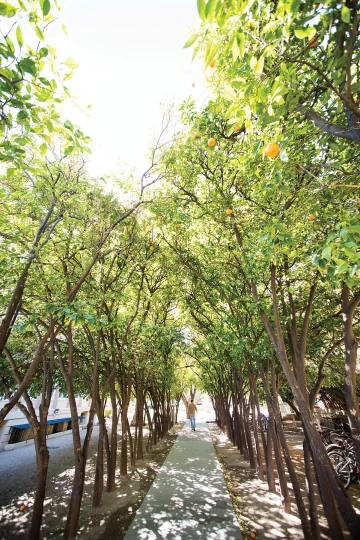Saving Food From the Dumpster: The UA’s Edible Campus

The University of Arizona enjoys a reputation for having a beautiful campus along with a great setting and ideal weather. At a time in the spring when much of the country is still covered in snow, students can stroll to class in flip-flops under a grove of citrus trees in fragrant bloom.
While the primary function of the trees — almost 8,000 of them — is to provide beauty and shade, they serve an additional purpose: Many produce food in the form of fruit. In addition to citrus, campus trees also produce figs and pomegranates. The fruit these trees produce, however, goes largely unnoticed and unused.
Linking Edible Arizona Forests on the UA Campus is a grassroots organization that takes advantage of this readily available food. Members of UA LEAF collect and distribute edible fruit growing on campus that otherwise would go to waste. Current projects include harvesting olives for olive oil, which is now available for purchase at the UA BookStores.
